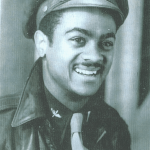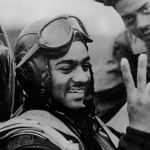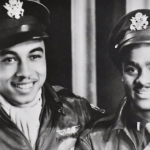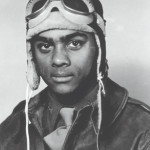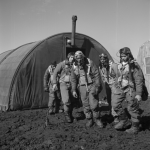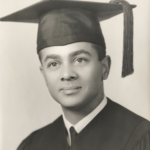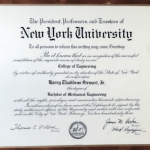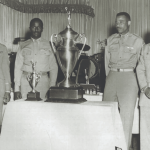Harry Stewart was born July 4, 1924 in Newport News, Virginia. When he was 2 years old his parents relocated to Queens, N.Y.C., not too far from North Beach airport. Harry grew up in that neighborhood, attending school and having a good time, all against the backdrop of the Great Depression. Harry understood that the war was on its way – and that the United States had implemented the Selective Service Act – so he opted to volunteer for the U.S. Army Air Corps, as he wanted to be a pilot. The events of Pearl Harbour and its aftermath only confirmed his decision. Harry went down to Tuskegee, where he was forced to confront the realities of the Jim Crow era South. He completed his training, and graduated with Class 44F. By November 1944 he and his classmates were on a troop ship, bound for southern France, and from there they headed south to Ramitelli, Italy. Harry joined the Red Tail squadron, assigned to escort the heavy bombers of the American Air Force. The Red Tails also searched out targets of opportunity, and on one of these days – April 1, 1945 – Harry succeeded in downing three Focke-Wulf 190-Ds. As the war in Europe came to an end, Harry expected to be sent to the Pacific, but the war against Japan ended later that summer, and the Red Tails made their way back to Ohio. Once he left the forces, Harry hoped to try civil aviation, but the war had not ended discrimination, and Harry was refused work in his preferred industry. Unable to work as a pilot, he went to NYU and earned his degree, going to work as an engineer. Harry worked ahead in his own field, acting as a mentor and a role model and playing his own role in the ongoing movement for civil rights. He and his wife and family found their place in the postwar era, falling into the rhythms of civilian life. Crestwood students and staff were able to meet Harry via zoom in May 2021, to hear his stories of the war and breaking down barriers that would forever change America.
Videos
Click next video below to keep watching
